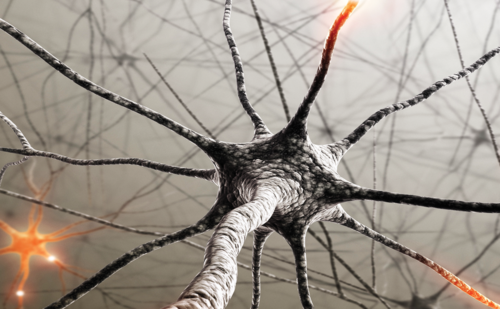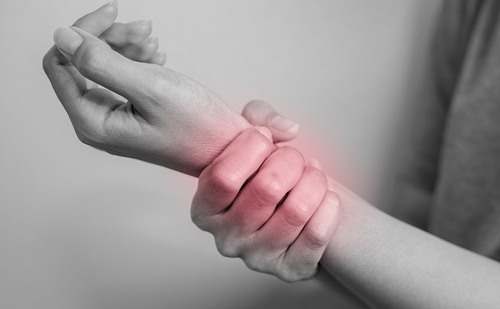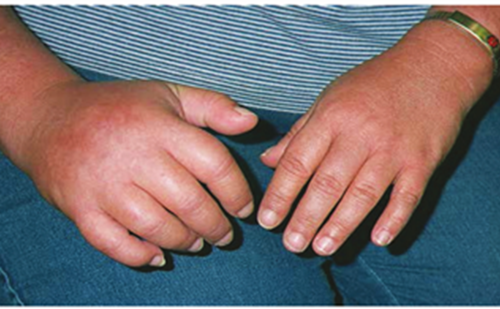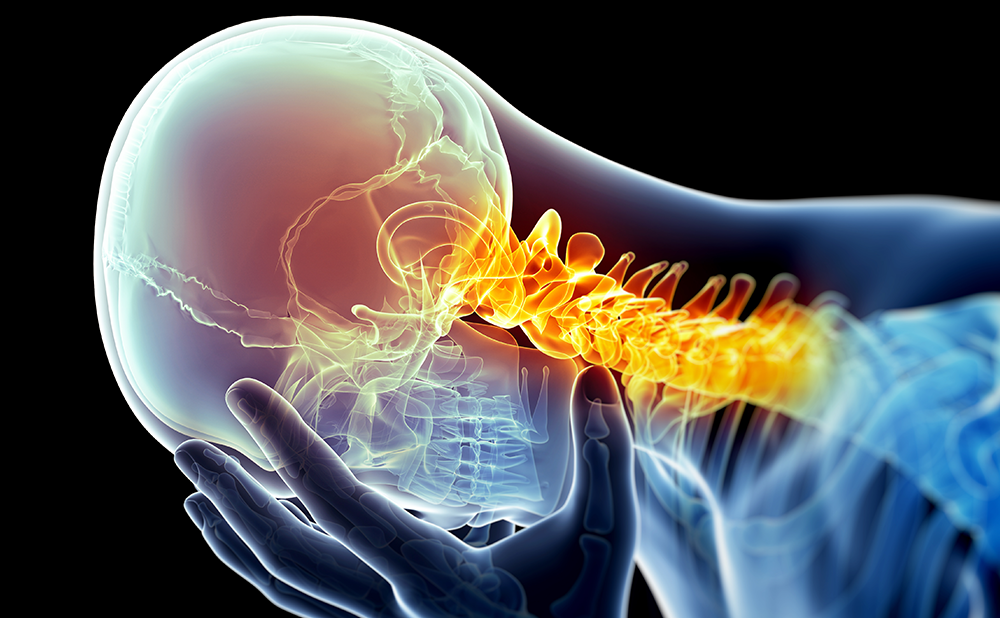Neuropathic pain is a common symptom in many diseases or injuries of the peripheral or central nervous system. Lesions of the nervous system may lead to potentially irreversible changes and imbalance between excitatory and inhibitory systems, leading to neuropathic pain syndromes.2 New medications have emerged during the past few years that help to augment the armamentarium of medications used in neuropathic pain in the past. Pre-clinical research provides several promising targets for treatment, such as sodium and calcium channels, glutamate receptors, monoamines and neurotrophic factors. Nerve damage increases the excitability of both the damaged and undamaged nerve fibres. Within the spinal cord, increases in the activity of calcium channels and the receptors for glutamate – especially the N-methyl-D-aspartate (NMDA) receptor – trigger wind-up and central pain syndromes. Recent studies have shown that most of the patients treated for neuropathic pain were receiving medication of unproven efficacy, or sub-optimum doses of the appropriate medication.1 Adequate treatment of neuropathic pain can be achieved only with therapy tailored to the individual patient on the basis of the mechanisms related to the pain in that particular patient as well as the underlying pathology.
Antidepressants
Tricyclic antidepressants (TCAs) may act both by enhancing dorsal horn inhibition and by diminishing peripheral sensitisation. They act by inhibiting the uptake of biogenic amines and are also strong sodium-channel modulators. The unique ability of these drugs to inhibit the presynaptic reuptake of the monoamines serotonin and noradrenaline was elucidated many years ago, as were their postsynaptic alpha-adrenergic, H1- histaminergic and muscarine cholinergic receptor-blocking effects.
TCA therapy has to be initiated in a low bedtime dose that is gradually increased on a weekly basis, usually up to 150mg or until the side effects interfere with a further increase of the dose. The most frequent side effects are sedation, anticholinergic effects (including dry mouth), constipation and postural hypotension. TCAs were found to be associated with a 2.2-fold greater relative risk of myocardial infarction and a 1.7-fold increase in overall mortality compared with placebo.3 Thus, caution is demanded when TCAs are prescribed for older patients, especially those with cardiovascular risk factors.
There is evidence that TCAs relieve peripheral neuropathic pain (PNP) conditions including but not limited to painful polyneuropathy of diabetic and non-diabetic aetiologies, post-herpetic neuralgia (PHN) and post-mastectomy pain syndrome. Apparently, TCAs have no effect in HIV neuropathy, although TCA doses in these trials were at the lower end of the range.3
One small trial indicated that central post-stroke pain will also be relieved by TCAs, whereas one large trial failed to find any effect of TCAs on spinal cord injury pain.3 However, the study on spinal cord injury pain probably used an insufficiently high dose of amitriptyline (average 50mg/day). The drug concentrations reported were below the level that was found to be associated with pain relief in central post-stroke pain.
Selective serotonin reuptake inhibitors (SSRIs) are non-tricyclic drugs that specifically inhibit serotonin reuptake without action on noradrenaline reuptake. It is controversial whether SSRIs relieve neuropathic pain.1 There is good evidence, however, that the serotonin-noradrenaline reuptake inhibitor antidepressant drugs venlafaxine and duloxetine are effective for treating diabetic peripheral neuropathy (DPN). However,
venlafaxine may cause cardiac dysrhythmias, and patients using this medication require careful cardiac monitoring. Duloxetine is a balanced serotonin and norepinephrine reuptake inhibitor (SNRI) approved by the US Food and Drug Administratin (FDA) for the treatment of pain related to DPN. Duloxetine 60mg QD or BID has been found not to cause cardiac conduction abnormalities or a significant change in blood pressure or weight. The overall analgesic efficacy of duloxetine 60mg QD and 60mg BID was similar. However, some patients reported further reduction in pain scores with the higher dose, although higher dose was also associated with higher incidence of some side effects.
Anticonvulsants
Gabapentin is an anticonvulsant that acts on neuropathic pain, probably by reducing central sensitisation. It binds to the alpha-2-delta sub-unit of a voltage-dependent calcium channel in laminae I and II – the termination sites of the nociceptors. Gabapentin is the anticonvulsant for which the most convincing evidence has been obtained concerning its efficacy in the treatment of PNP, PHN and painful diabetic neuropathy (PDN). The reduction in pain starts relatively soon after the initiation of therapy.4 The side effects are dizziness, somnolence and – less commonly – gastrointestinal symptoms and peripheral oedema.5 Pregabalin is a novel alpha-2-delta ligand that was shown to be effective in the treatment of PNP. The therapeutic effect can start as early as the first full day of the treatment with mild to moderate side effects. It is still unclear what advantages pregabalin has over gabapentin for DPN. Until better evidence emerges, the potential availability of less expensive generic formulations – together with greater experience with its use – puts the emphasis on gabapentin as the main antiepileptic drug for alleviating DPN.
The only pharmacological treatment for trigeminal neuralgia that enjoys consistent support for its efficacy is carbamazepine. It reduces highfrequency repetitive firing by inactivating voltage-gated sodium channels. The most frequent side effects are sedation, blurred vision, diplopia, dizziness, ataxia, gait disturbance, nausea and vomiting. Because of the idiosyncratic haematological and hepatic effects, routine monitoring of these profiles must be performed.6 Oxcarbazepine has a much better side effect profile than carbamazepine. Its efficacy for the treatment of trigeminal neuralgia was demonstrated in several open-label and four double-blind trials.6
Lamotrigine is an anticonvulsant that has also been tested in neuropathic pain. There is some evidence for the effectiveness of lamotrigine in central post-stroke pain and in the subgroup of HIV-related neuropathy. No benefit was demonstrated for diabetic neuropathy in intractable neuropathic pain, spinal cord injury or trigeminal neuralgia. The small number of studies and the small number of participants are insufficient to provide robust evidence. This – together with the difficulties of dose titration and adverse effects – is likely to dissuade many clinicians from choosing lamotrigine to treat neuropathic pain.7
Only limited support could be found for the pharmacological treatment of the two central neuropathic pain conditions: post-thalamic pain syndrome and spinal cord injury. Amitriptyline at a dose of 75mg per day and lamotrigine at 200mg per day were found to be effective in relieving central post-stroke pain. Gabapentin – titrated over four weeks to the maximum tolerated dose – was demonstrated to be effective in the treatment of pain after spinal cord injury. Of the topical agents, capsaicin has the best evidence base, while local anaesthetic patches may also have a useful therapeutic role.8
Opioid Options
Tramadol is a centrally acting analgesic that has both direct opioid action and indirect monoaminergic action. Two large studies proved its efficacy in the treatment of neuropathic pain in PHN and PDN. The most frequent side effects are somnolence, dizziness, headache, dry mouth, nausea, constipation and sweating.9
The use of opioids for neuropathic pain remains controversial. Those studies that have taken place have been small, yielded equivocal results and have not established the long-term risk/benefit ratio of this treatment. Some intermediate-term studies have demonstrated significant efficacy of opioids over placebo, which is likely to be clinically important. Reported adverse events of opioids include nausea and constipation, and are common but not life-threatening. Further randomised controlled trials are needed to establish long-term efficacy, safety (including addiction potential) and effects on quality of life.
The effect of combining antidepressants with other drugs in neuropathic pain treatment is largely unknown. When treatment combinations are used, it is good practice to select combinations of drugs that do not overlap too much in pharmacological action. Thus, TCAs and venlafaxine could be combined with gabapentin and with opioids but not with tramadol.
Surgical Management of Neuropathic Pain
Neurosurgical options in the treatment of chronic pain include:
- electrical stimulation of the brain, spinal cord or peripheral nerves;
- implantation of devices to deliver drugs to the cerebrospinal fluid; and
- the incision or even destruction of neural tissue.
Ablative neurosurgical options for chronic pain treatment have been largely replaced in the past 20 years by neuromodulatory approaches such as electrical stimulation of the central nervous system or intrathecal delivery of opioids and antineuropathic agents. However, cordotomy is still a valuable operation for certain forms of cancer-related pains that have proved to be resistant to pharmacotherapy. Another effective neurodestructive procedure is the dorsal root entry zone (DREZ) operation, which is usually the best treatment option for pain caused by nerve root avulsion or segmental (girdle-zone) pain in spinal cord injury.10
A paradox of neuroablative procedures is that they are often most effective in predominantly nociceptive pain states in which the pain derives from direct stimulation of nociceptors and is transmitted via axons that are eliminated by neurodestructive procedures. Most cancer pain falls within this category. In contrast, neuropathic pain is less amenable to opioids, and neuroablative procedures rarely provide lasting relief; they may in fact cause an even more widespread pain state.11 In peripheral nerve injury pains, such as those suffering with PHN and post-amputation pain, significant relief from DREZ lesioning appears only to be obtained when the pain has paroxysmal (electrical shooting) components or is triggered by superficial stimulation.
Retrospective studies of surgical sympathectomy for the treatment of complex regional pain syndrome (CRPS) demonstrated long-term successful outcomes in cases of thoracic neuropathy and slightly fewer successful outcomes in lumbar sympathectomy. Earlier intervention (<16 months) seems to be associated with better success than later intervention (>36 months). However, reports of successful outcomes must be balanced with reports of the negative impact of surgical sympathectomy in some cases. The role of sympathectomy in the treatment of CRPS needs to be determined in large, randomised prospective trials, of which there have been none.
In comparison, spinal cord stimulation (SCS) for the treatment of neuropathic pain is supported by good-quality randomised controlled trials, prospective and retrospective case studies and observational case series that confirm its efficacy and safety. SCS has been successfully used in various refractory neuropathic pain conditions, including failed back surgery syndrome (FBSS), neuropathic back and leg pain and CRPS types I and II. Clinical evidence has shown that compared with conventional pain therapy more than two-thirds of carefully selected patients treated with SCS achieved sustained pain relief of 50% or more, with minimal side effects.12 Trial stimulation, which is relatively inexpensive and completely reversible, has predictive value for long-term efficacy and increases the cost-effectiveness of permanent implantation.
The mechanism of action of SCS is not fully understood, but is thought to involve more than just direct inhibition of pain transmission in the dorsal horn of the spinal cord. Experimental studies involving neurotransmitters – for example, gamma-aminobutyric acid (GABA) and adenosine – have been used to suggest other pathways by which SCS works. There is evidence that it modulates the autonomic nervous system, which may explain its efficacy in pain syndromes such as CRPS.13,14 At present, spinal segmental inhibition seems to be crucial. Animal studies show that pain modulation by SCS may also involve supraspinal activity via the posterior columns of the spinal cord.15 Recent SCS studies performed on rat models of mononeuropathy have demonstrated a preferential effect on A-beta fibre-mediated functions, including attenuating the hyperexcitability of wide-dynamic-range dorsal horn neurones. These effects were coupled with an increased release of GABA and reduced glutamate and aspartate release in the dorsal horn.16
Motor cortex stimulation (MCS) is a technique that has emerged as a promising method for the management of pain in patients with difficult neuropathic and central pain conditions.17 MCS has proven most successful for patients with trigeminal neuropathic/deafferentation pain and central post-stroke pain when conservative measures had failed.18 However, even more than for SCS, the mechanism of action of MCS is far from clear. Studies using positron emission tomography (PET) in patients undergoing MCS have provided some insight into potential mechanisms, and there are several theories under consideration.19,20
Other areas that can be stimulated include the peripheral nervous system (PNS), which is an accepted treatment for neuropathic pain. Recent work has focused on its potential for relieving headache pain. One recent study investigated the effectiveness of PNS in reducing occipital headache pain, and found it reduced headache pain, headache frequency and medication use.21













